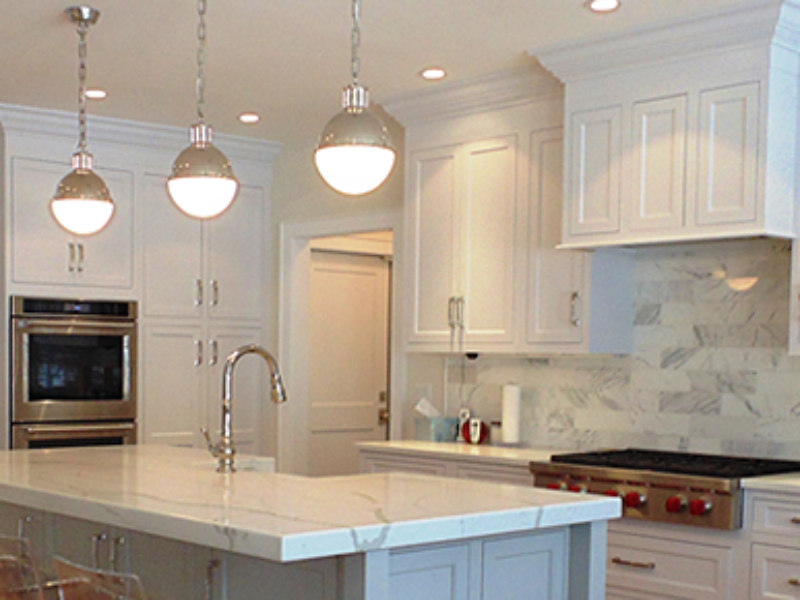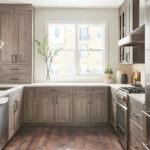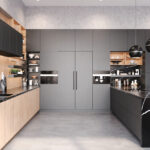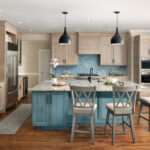It’s important when planning a new kitchen remodel or purchasing replacement cabinets to understand the difference between the two types of cabinet construction — Framed or Full Access (Frameless). There seems to be some amount of misinformation about them, so we hope to clear up any misconceptions with this blog post. Both types of cabinets are available in a myriad of styles, woods, and designs and each has its own unique advantages. It really depends on what you prefer.
Here are a few things to consider as you plan your new kitchen and decide which type of cabinet construction is best for you.
What is Framed Cabinetry?
In its simplest terms, Framed cabinetry has a frame on the front of the cabinet box. This frame resembles a flat picture frame to which is attached the cabinet sides, top and bottom. In this type of cabinet construction, the rails (horizontal pieces) and stiles (vertical pieces) form a 1-1/2 inch “face frame” at the front of the cabinet box. The cabinet door hinge is typically attached to the inside edge of the frame. Traditionally, American cabinet manufacturers have built cabinets using Framed construction.
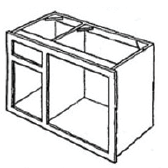
What are the advantages of Framed cabinetry?
- The face frame lends strength and stability to the cabinet box.
- Face frame cabinetry is easier to install, which can be an advantage to less experienced cabinet installers.
- Several overlay options are available: Partial overlay, Full overlay or Inset overlay. Broadly, this refers to the amount of frame visible on a cabinet after the doors and drawers are attached. (We have all three overlay options on display at our location.)
- For those preferring Inset overlay: Inset overlay can only be accomplished on a Framed box.
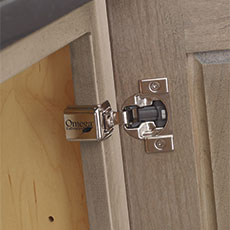
Are there disadvantages to Framed cabinetry?
- There is slightly less interior space for volume storage – that is, behind cabinet doors – and reduced drawer capacity can be especially evident.
- The reveals (spacing) between doors and drawer fronts is noticeably greater than the reveals offered with Full Access cabinetry. This is very important in Modern and Urban design.
What is Full Access or Frameless cabinetry?
Full Access (Frameless) cabinet construction doesn’t feature a face frame but typically uses heavier material – for cabinet sides, tops and bottoms – for better stability. Frameless cabinetry offers greater accessibility by eliminating the face frame – hence the name Full Access. Originally thought of as “European construction,” Full Access has been popular in the American market for decades. While Full Access allows a great range of styling, from Traditional through Transitional to Modern, it is particularly appropriate for Modern & Urban styling, in which tight reveals (see above) and linear design is characteristic. In the case of Full Access cabinets, only Full overlay doors can be used, with hinges attached directly to the sides of the cabinet box.
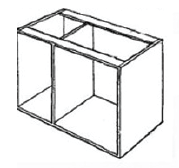
What are the advantages of full access cabinetry?
- Once installed, reveals around the doors and drawer fronts are minimal (often just 3/32”), providing a sleek look that works well with multiple style preferences.
- More storage: Typically, wall cabinets in Full Access are 13” deep rather than 12” deep, which is customary with Framed cabinetry.
- Drawer box volume in Full Access cabinetry is greater because of the space saved by eliminating a face frame. (Our internal calculations reveal that Full Access drawer volume is 10% to 25% greater compared to the same size Framed cabinet drawer!)
- Given the two features just listed, Full Access is a “best option” for small kitchens.
- There are more material options in Full Access: more laminates, textured melamines, acrylics, metallics, etc.
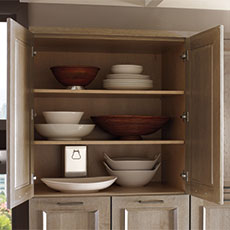
Are there any disadvantages to frameless cabinetry?
- Installation is slightly more time consuming and exacting, and selecting installers well-experienced in Full Access cabinetry is “a must.”
- It is inadvisable to purchase “very affordable” Full Access cabinetry. At the factory level, precise machining of components and skilled assembly of Full Access cabinetry is essential, given the very tight tolerances and reveals. “Affordable” Full Access is too often a disappointment to the buyer.
- For those who prefer Inset overlay (and Partial overlay) styling: These are not available in Full Access.
So how do I decide?
There is no right or wrong answer here. A lot will depend on the overall style of your kitchen and your home, the age of your house and your budget. It is a choice between a more streamlined look with more access, and a more traditional look with a little less access, but perhaps a simpler installation.
Before making a final decision on which type of cabinetry you choose, we suggest spending some time at a reputable kitchen showroom and speaking with an experienced kitchen designer. Take some time to look through various manufacturers’ websites to get more information and design ideas.
You can also download our new guide, What To Consider Before A Kitchen Remodel, which is packed with design ideas and things you should be aware of prior to remodeling your kitchen.

